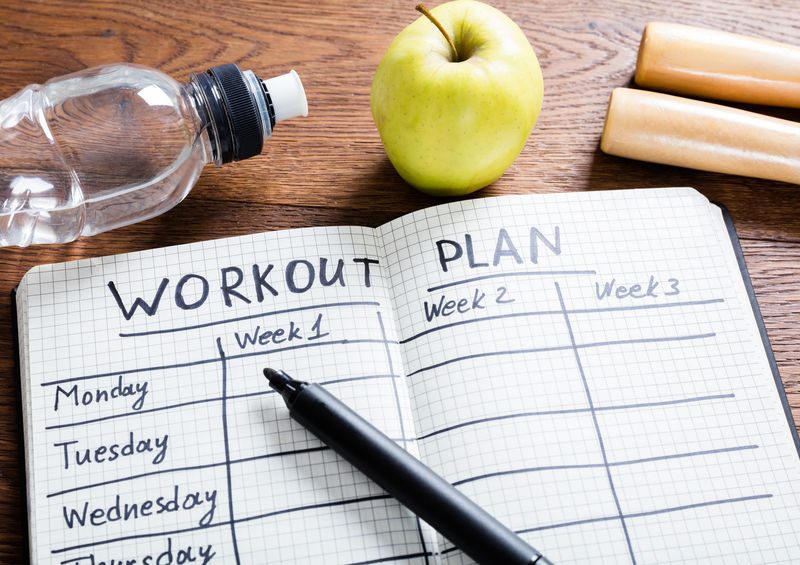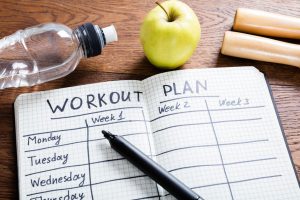
Maximizing the immediate results of eager new clients increases the likelihood of retention for both them and you throughout the year. Many clients who invest in training as part of their New Year’s resolution will be either new to exercise or deconditioned from a long stint of inactivity.
Implement this programming approach to maximize the potential for adherence.

3 Reasons to Choose Patterns Over Muscle Groups
1. Programming based on movement patterns by nature utilizes compound movements and more closely mimicks activities of daily living (ADLs). One of the primary subjective markers that clients use to gauge the effectiveness of their new training regimen is the improvement in their ADLs.
If you can improve the ease with which your client goes about their normal day, you are more likely to retain them.
2. Compound movements burn more calories because they require contraction of multiple muscles and movement of multiple joints. They improve movement efficiency and coordination, and they elevate the heart rate more than isolation exercises, providing both neuromuscular and cardiovascular benefit.
3. If your client is short on time, using movement patterns to guide your programming will allow you to create circuits that will work your client from head to toe in the most time-efficient manner possible.
Patterns and Exercises to Implement
Use the following patterns in your program to ensure your client engages in a well-rounded workout:
- Push/Press
- Examples: Push-ups (variations), dumbbell/barbell bench press, incline/decline bench press, dumbbell/barbell shoulder press, TRX push up, dumbbell/TRX fly
- Pull
- Examples: Pull up (variations), lat pulldown, dumbbell/barbell row, seated row, T-Bar row
- Squat
- Examples: Box squat, air squat, goblet squat, leg press, dumbbell squat, jump squats, barbell back squat, barbell front squat
- Hinge
- Examples: Deadlift, Romanian deadlift (RDL), single leg RDL, glute bridge (variations)
- Lunge
- Examples: Bodyweight lunges, walking lunges, dumbbell/barbell lunges, reverse lunges, step ups, split squat, Bulgarian split squats, jumping lunges
- Rotation/Anti-rotation
- Examples: Deadbug (variations), bird dog, plank (variations), side plank (variations), wood chop/hay bale, Pallof press, farmer’s carry, Russian twist, lateral medicine ball toss
Sample Workout for a Client New to Exercise
- Deadbug – 3 sets of 8-12 reps
- Glute Bridge – 3 sets of 8-12 reps
- Box Squat – 3 sets of 8-12 reps
- Step Up – 3 sets of 8-12 reps
- Incline Push Up – 3 sets of 8-12 reps
- TRX Row – 3 sets of 8-12 reps
Rationale for Sample Workout
The deadbug ensures the stability of the lumbar spine and appropriate contraction of the core musculature.
The glute bridge, begins to challenge the stability of the lumbar spine and promote mobility of the hips. The glutes and core should engage to keep the lumbar spine stable.
Box squats build upon the core engagement of the deadbug and the glute engagement of the glute bridges. It continues the challenge of stability to the lumbar spine in a way that starts to mimic ADLs and bringing in greater engagement of the quadriceps.
The step-up progresses the work done with box squats. It provides more dynamic movement, greater recruitment of the glutes and thighs, incorporates balance work, unilateral stability of the foot, knee, and lumbar spine, and mobility of the ankle and hips.
Shifting the focus from the lower body to the upper body, the last two exercises are purposefully paired together to provide balance for the shoulders. Most sedentary clients will have internally rotated shoulders, and balancing both pushing and pulling exercises is crucial to the health of the shoulder joint in order to help prevent or mitigate any future shoulder injuries.
The incline push-ups continue to integrate stability of the lumbar spine and core while strengthening the pecs, anterior delts, and triceps. The TRX row is the inverse of the incline push up, engaging the lats, rhomboids, posterior delts, middle and lower traps, and biceps.
Your Client Will Be Glad They Chose You
While it is common to create exercise programs based around muscle groups, newer clients will be better served by focusing on movement patterns instead. Utilizing total body workouts during the initial phase of a new client’s program will give them the greatest benefit for their time and financial investment.
____________________________________________







